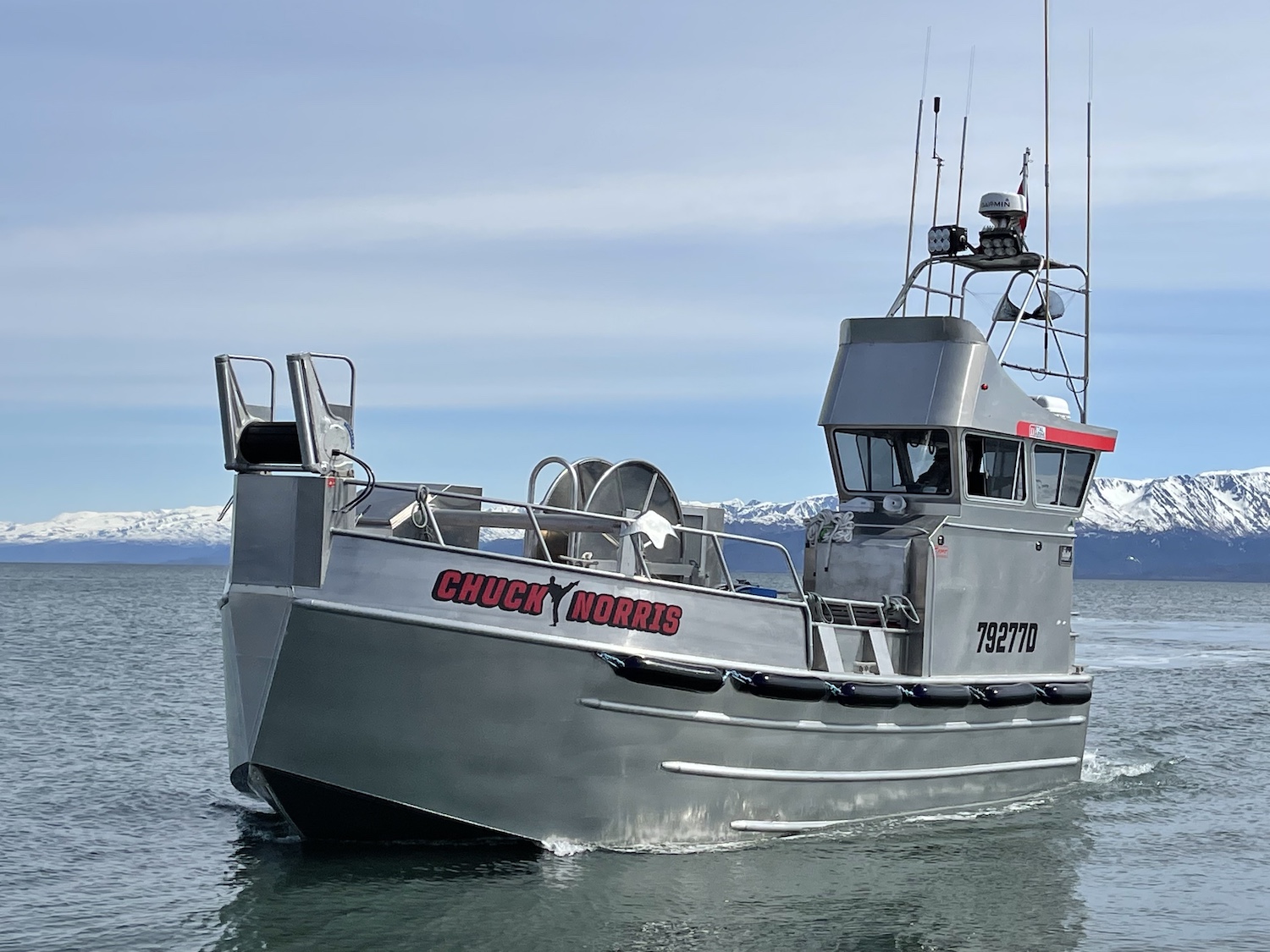Shiloh Seymour’s career as a gillnetter in Bristol Bay, Alaska, started when he was 7 years old on the Drifter, a plywood gillnetter his father owned that had been built by George Ham in 1966.
Years later in 2005, when Seymour was 22, he purchased the boat from his father. Seymour, who lives in Homer, followed the Drifter with a couple of used aluminum bow pickers that he rebuilt.
Now there’s the Chuck Norris, Seymour’s new 32'x17'4"x18" Bristol Bay gillnetter. It was launched May 10 and sea trialed on May 11.
“There’s truly nothing like it out there,” says Seymour. He wanted “it to be ultra shallow, pack a lot of weight and be big and comfortable for taking my kids out,” and he feels it’s what he got. Much of that satisfaction is probably due to Seymour’s own effort, for he was closely involved with the designing and building of the Chuck Norris, from beginning to end.
The idea for the name came from his wife Jennifer.
She “was trying to think of a bad ass name and that was the first thing that came out of her mouth,” he says. “I thought it was great."
Seymour began working with boat designer Sean DiGaetano in 2020. “For most of a winter, we were sending drawings back and forth, planning the whole thing.” Once the plans were finalized, Metal Marine in Homer welded up the bare aluminum boat with a side house, but with nothing inside the house or the hull.
The work included installing a 120-inch delta pad triangle in the back of the hull, which eliminates about two inches of draft. The delta pad triangle required removing part of the aft keel section and making the back of the hull completely flat, from the transom forward 120 inches.
Reducing the draft helps create a hull with only three degrees deadrise. It was part of Seymour’s desire for an extremely shallow draft. “It’s so we can stay later in the shallows than anyone else.”
Once the partially completed boat was delivered to Seymour in January, a tent-like structure was erected over it so the boat could be worked on in the winter. Then Seymour and his crew of two or three guys plus local subcontractors began putting the gillnetter together, including installing the engine, gears, jets, hydraulics, electronics and everything else that went inside the boat.
Propulsion power comes from a pair of 530 hp, 6.7 liter FPT diesels matched up to MJP Ultrajet 340s. On sea trials the Chuck Norris topped out at 30.2 mph. That’s with 9,000 pounds of water packed on deck.
“It easily got on step,” notes Seymour. He figures the Chuck Norris will pack between 21,000 and 25,000 pounds of salmon under the hatches. The salmon will be chilled with a 10-ton Pac West Refrigeration chiller with a transom cooling unit.
On deck, Country Welding of Homer built the net reel with a Kinematics Marine drive motor. It’s on a slider and can move from bow to stern and back for setting and hauling.
A relatively unusual feature is the side house.
“Only four side house through pickers have ever been made,” says Seymour. He feels the side house design has several advantages over a raised house where the wheelhouse is built above the deck and the net reel slides under it.
With a side house, “you can see your crew all the time,” says Seymour. With a raised house, he thinks you aren’t always aware of what’s happening on deck.
In addition the side house, because it has less of a profile, doesn’t offer as much wind resistance and is therefore more comfortable to work in than the raised wheelhouse. If need be, he can also operate the Chuck Norris from the top of the side house.







